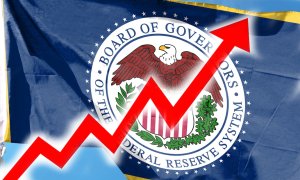Just as the Great Depression remained etched in the minds of both economists and policy makers for a very long time, undoubtedly so will the experience of the post-financial crisis Great Recession. In the case of the former, what most mainstream economists had inferred as principal lesson from the Great Depression was that wages and prices had just not fallen sufficiently to get real wages down to ensure a return to high employment and to generate sufficient positive wealth effects as A.C. Pigou had defended in 1943. Consequently, the culprit was wage and price rigidities and what was needed was a strong dose of deflation. But since the market mechanism was just too slow to get wages and prices to adjust downward, some form of New Deal fiscal policy was required to reduce unemployment.
While this argument still remains today, and, in a curious twist, actually came to be described as the textbook “Keynesian” explanation of involuntary unemployment (characterized by sticky wages resulting from workers’ money illusion), there was also another explanation that one finds discussed as early as in 1937 in Hick’s IS-LM analysis, which was subsequently developed by Patinkin in 1948. The problem was also one of downward price rigidity but, in this latter case, it was because of nominal interest rates being stuck at their lower-bound (or in a so-called liquidity trap). The culprit now became interest rate rigidity in preventing the self-adjustment of the product market. While pointing to the lower bound in his analysis at the time, Patinkin rescued the Pigouvian prescription against Fisherian and Kaleckian criticisms that the wealth effects must also have as counterpart debt effects that would negate the former. Patinkin built a more-focused argument in his defense of Pigou and the need for deflation in periods of recession. He did so by erecting a policy framework that rested on the dubious significance of a particular type of wealth effect, normally described as the real balance effect, which pointed to the existence of central bank base money (or so-called “outside” money). In this case, much as with the Pigou effect, the real value of these money balances would rise as prices fell and thus, as long as prices fell sufficiently, households would feel wealthier, thereby stimulating household spending and eventually pulling the economy out of the recessionary trap. Essential reliance on these wealth effects and/or real balance effects still form the core of the explanation nowadays in traditional macroeconomics textbooks of the all-important downward-sloping aggregate demand relationship in price level-real output space.
If we now jump forward some seven decades to the recent Great Recession the arguments have changed very little within the mainstream story. There are some, especially the neo-Hayekians, who would rely on a strong dose of deflation to “cleanse” the system of mal-investment; and there are those, especially some of the modern neo-Wicksellians, who argue that the problem is that, even with a deflation, you will not be able to get real rates of interest sufficiently into negative territory to induce investment, because of the very low negative Wicksellian natural rate of interest. If one cannot get prices to fall, and stubborn real interest rates will not decline sufficiently, then one solution that was offered, for example, by maestro Ben Bernanke starting in 2009, was quantitative easing (QE). In a way, this latter policy plays an analogous role in getting real base money to rise. In this case, however, it is not because of Patinkinesque reasoning about induced consumer spending from the measly real balances held by households. In the case of QE, it is predicated on the belief that billions of dollars of new “helicopter money” falling onto commercial banks’ balance sheets might induce banks to lend more, thereby stimulating private spending. This policy, which has done little to stimulate lending, is based on the mistaken belief that the banking sector is somehow reserve-constrained and is just waiting for some extra liquidity from the central bank to make out loans to unsatisfied hordes of creditworthy borrowers knocking on their doors.
Keynes in the 1930s and his post-Keynesian supporters never accepted these arguments. The private sector stabilizers defended by Pigou and Patinkin associated with falling prices are empirically of no importance in a world of endogenous money, as Michal Kalecki made very clear as early as 1944. But this does not mean that there are no private sector stabilizers that can work themselves out in times of recession. In contrast to the mainstream, we wish to argue that one such important private sector stabilizing influence is the behavior of real wages. For Post-Keynesians, the viscosity of wages has a stabilizing macroeconomic effect. Indeed, in a world of wage stickiness and falling prices that characterized the Great Depression, real wages of the employed labor force rose tremendously and pushed up somewhat consumption spending. Moreover, in contrast to the stories about rising real wealth resulting from deflation, what actually took place during the Great Depression was the massive destruction of wealth as prices fell and business enterprises collapsed under the burden of rising real debt, as emphasized by Irving Fisher and Hyman Minsky. On the other hand, we find that because unemployed households were not as heavily in debt as they are in today’s financialized world, they sought to maintain their consumption spending during the early years of the Great Depression by depleting their savings or building up their debt, as institutionalist economists such as James Duesenberry argued. This phenomenon of rising real wages together with a declining saving rate, were important private sector stabilizers which, in the absence of public sector stabilization policies, were important in building up demand during the early years of the Great Depression.
Neither of these two stabilizing patterns of behavior characterized the Great Recession. On the contrary, real wages either remained relatively flat as in the US, or actually fell significantly as for instance, in the UK. In addition, households already had been so heavily in debt and had reached historically-unprecedented levels before the crisis. As soon as output and employment fell, households quickly sought to deleverage in what was described by Richard Koo as a balance sheet recession. The lack of real wage growth and the immediate deleveraging were important destabilizing factors that had not been characteristic of the early 1930s. This would suggest, therefore, that there existed less private sector stabilizers during the recent Great Recession than at the beginning of the 1930s. We wish to argue that one important reason for the more mitigated recession was because, unlike the 1930s where activist macroeconomic policy was almost non-existent in the early years, this was not so this time around. In fact, both on the monetary and fiscal fronts, policy makers acted swiftly in both bringing real interest rates down into negative territory thereby softening the blow on debtor households, and pursuing what we have described as an activist “fiscalist” policy position immediately after the financial crisis. While this was sufficient to soften the impact of the recession it was insufficient to prevent the economy from stagnating, as governments began to reverse their fiscal stance as early as 2010. Unless there is strong support primarily on the fiscal side, in the absence of real wage growth and strong household consumption spending, modern industrial capitalist economies may remain stuck in a more prolonged state of long-term stagnation than what had occurred in the 1930s. Without some important makeweight measure in the form of long-term public investment, and because of the inadequacy of private sector stabilizers in modern financialized economies, the private system may be even more vulnerable to further collapse than during the Great Depression.






